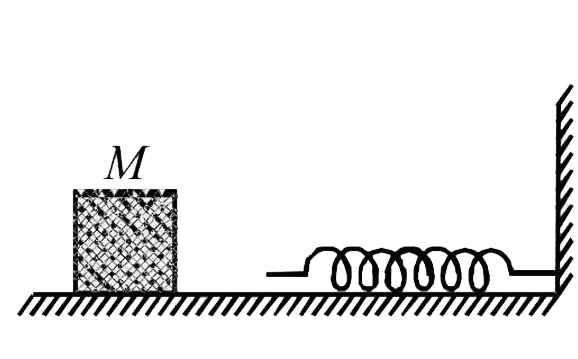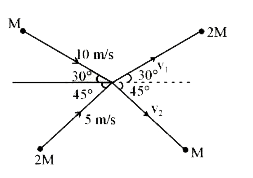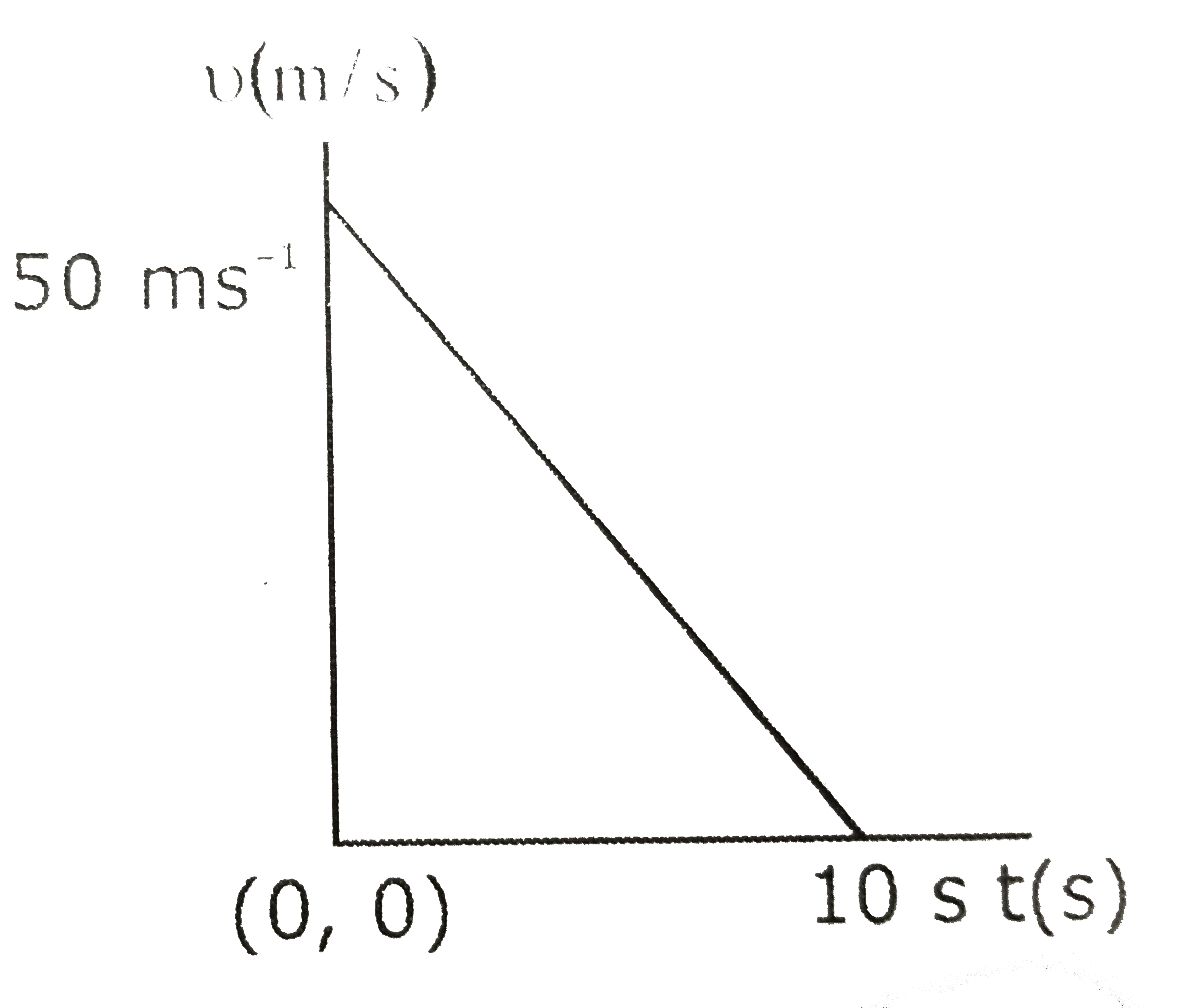Objective Type Questions (JEE (Main) & Other State Boards for Engineering Entrance) from MODERN PUBLISHERS PHYSICS Chapter 31 WORK, ENERGY AND POWER for Class 11
| Class 11 | PHYSICS |
| Chapter | WORK, ENERGY AND POWER |
| MODERN PUBLISHERS PHYSICS | Objective Type Questions (JEE (Main) & Other State Boards for Engineering Entrance) |
| Medium | English |
| Academic Year | 2023-2024 |
Question 3
An oscillator of mass M is at rest in its equilibrium position in a potential V=12k(x−X)2. A particle of mass m comes from right with speed u and collides completely inelastically with M and sticks to it. The process repeats every time the oscillator crosses its equilibrium position. The amplitude of oscilllations after 13 collisions is : (M=10, m=5, u=1 ,k=1)View SolutionQuestion 4
Three blocks A, B and C are lying on a smooth horizontal surface, as shown in the figure. A and B have equal masses, m while C has mass M. Block A is given an inita speed v towards B due to which it collides with B perfectly inelastically. The combined mass collides with C, also perfectly inelastically 56th of the initial kinetic energy is lost in whole process. What is balue of M//M?
 View Solution
View SolutionQuestion 6
A locomotive of mass m starts moving so that its velocity varies according to the law v=a√s, where a is a constant, and s is the distance covered. Find the total work performed by all the forces which are acting on the locomotive during the first t seconds after the beginning of motion. View SolutionQuestion 7
A block of mass m, lying on a smooth horizontal surface, is attached to a spring (of negligible mass) of spring constant k. The other end of the spring is fixed, as shown in the figure. The block is initally at rest in its equilibrium position. If now the block is pulled withe a constant force F, the maximum speed of the block is :
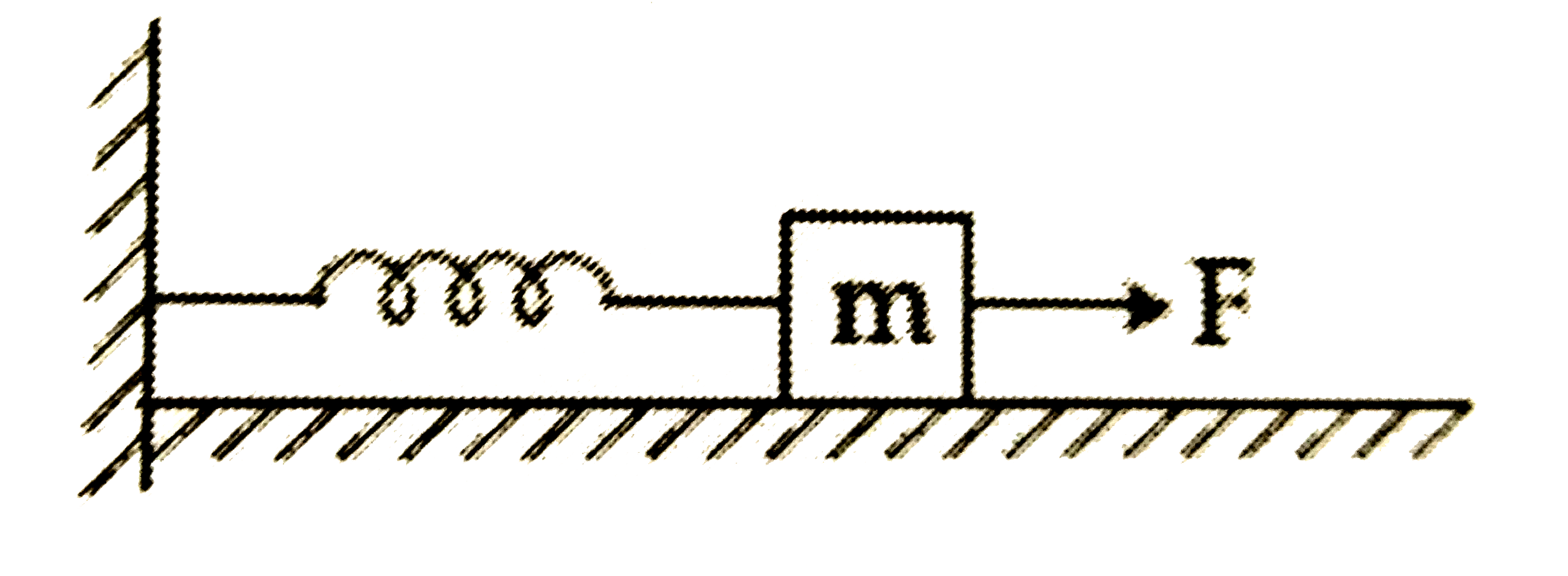 View Solution
View SolutionQuestion 10
A spherical ball of mass 20kg is stationary at the top of a hill of height 100m , it rolls down a smooth surface to the ground , then climbs up another bill of height of 30m and final rolls down to a horizontal base at a height of 20m about the ground . The velocity attained by the ball is View SolutionQuestion 16
A block of mass m=0.1kg is connceted to a spring of unknown spring constant k. It is compressed to a distance x from its equilibrium position and released from rest. After approaching half the distance (x2) from the euilibrium position, it hits another block and comes to rest momentarily, while the other block moves with velocity 3ms−1. The total initial energy of the spring is :View SolutionQuestion 18
A block of mass 'm' is connected to another block of mass 'M' by a spring (massless) of spring constant 'k' The blocks are kept on a smooth horizontal plane. Initially the blocks are at rest and the spring is unstretched Then a constant force 'F' starts acting on the block of mass 'M' to pull it. Find the force on the block of mass 'm' :View SolutionQuestion 20
A point particle of mass m, moves long the uniformly rough track PQR as shown in figure. The coefficient of friction, between the particle and the rough track equals μ. The particle is released, from rest from the point P and it comes to rest at a point R. The energies, lost by the ball, over the parts, PQ and QR, of the track, are equal to each other, and no energy is lost when particle changes direction from PQ to QR.
The value of the coefficient of friction μ and the distance x (=QR), are, respectively close to:
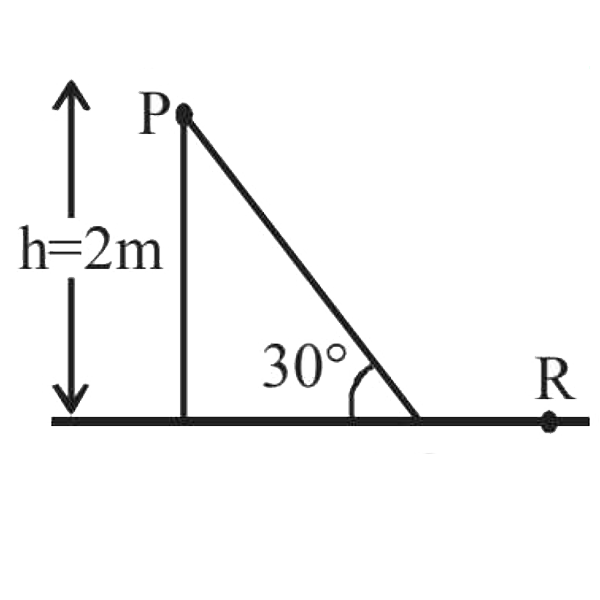 View Solution
View SolutionQuestion 25
A car weight W is on an inclined road that rises by 100 m over a distance of 1 km and applies a constant frictional force W20 on the car . While moving uphill on the road at a speed of 10 m s−1 , the car needs power P . If it needs power P2 while moving downwill at speed v then value of v is : View SolutionQuestion 27
In a collinear collision, a particle with an initial speed v0 strikes a stationary particle of the same mass. If the final total kinetic energy is 50% greater than the original kinetic energy, the magnitude of the relative velocity between the two particles, after collision, is :View SolutionQuestion 29
A particle of mass ‘m’ is moving with speed ‘2v’ and collides with a mass ‘2m’ moving with speed ‘v’ in the same direction. After collision, the first mass is stopped completely while the second one splits into two particles each of mass ‘m’, which move at angle 45∘ with respect to the original direction. The speed of each of the moving particle will be: View Solution
All Exercises from MODERN PUBLISHERS PHYSICS Class 11 PHYSICS WORK, ENERGY AND POWER
- Chapter Practice Test
- Conceptual Questions
- Higher Order Thinking Skills & Advanced Level
- NCERT FILE (Exemplar Problems Objective Questions)
- NCERT FILE (NCERT Additional Exercise)
- NCERT FILE (NCERT Exemplar Problems (Short Answer Type Questions))
- NCERT FILE (NCERT Exemplar Problems (Very Short Answer Type Questions))
- NCERT FILE (NCERT Textbook Exercise)
- Objective Type Questions (A. Multiple Choice Questions)
- Objective Type Questions (Assertion Reason Type Questions)
- Objective Type Questions (B. Multiple Choice Questions)
- Objective Type Questions (C. Multiple Choice Questions)
- Objective Type Questions (D. Multiple Choice Questions)
- Objective Type Questions (Integer Type Questions)
- Objective Type Questions (JEE (Advanced) for IIT Entrance)
- Objective Type Questions (JEE (Main) & Other State Boards for Engineering Entrance)
- PRACTICE PROBLEMS
- Revision Exercise (Additional Questions)
- Revision Exercise (Fill in the blanks)
- Revision Exercise (Long Answer Questions)
- Revision Exercise (Numerical Problems)
- Revision Exercise (Short Answer Questions)
- Revision Exercise (Very Short Answer Questions)
- SOLVED EXAMPLES
- Tough & Tricky (PROBLEMS)

